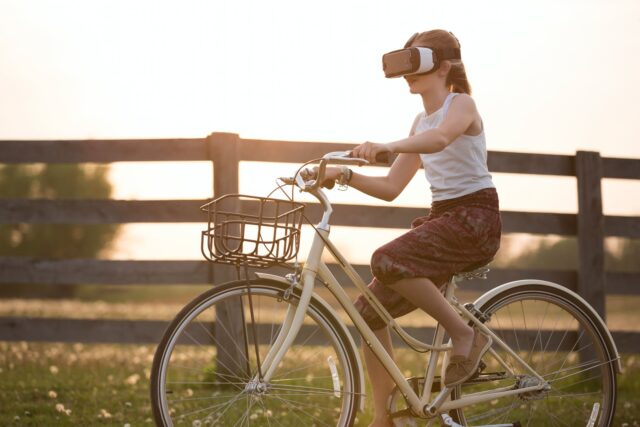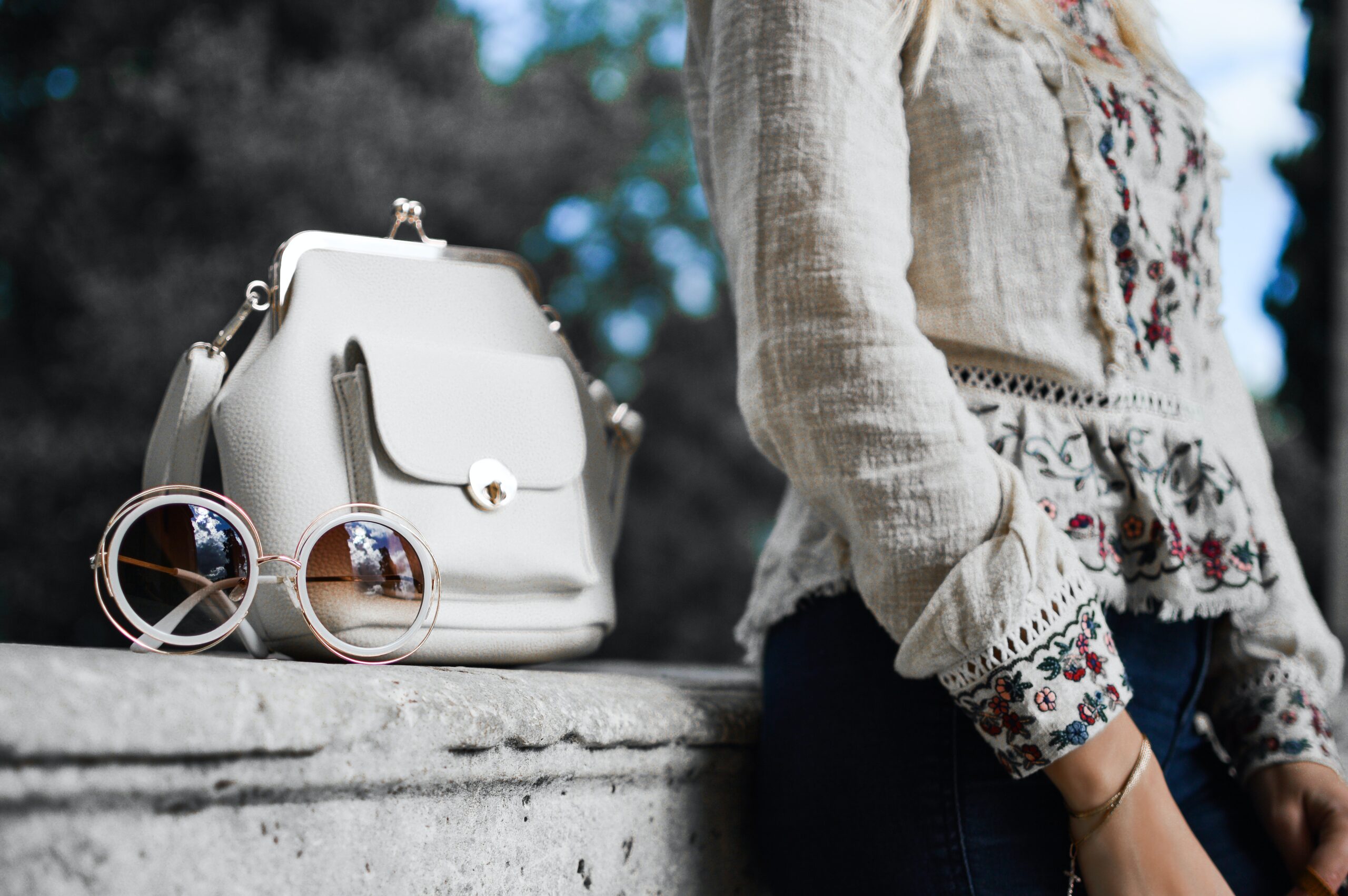
Fashion industries generate billions of dollars every year, yet they still remain one of the dirtiest ones. The way of manufacturing clothes hasn’t changed in decades, largely due to the cheap labor in many underdeveloped countries. The industry fell behind on technological progress disregarding ethical and environmental issues. In recent years, the fashion businesses found themselves to be a target of many associations expressing their concern about animal abuse, pollution, and free child labor. For these reasons and many others, the industry began to pay attention to the uproar and slowly started implementing new solutions. Their customers, by changing themselves, changed the way fashion industry conduct their business by modifying their manufacturing processes and becoming environmentally conscious.
From 3D printing, and artificial intelligence, to Instagram fashion shows, the industry is emerging from hibernation, applying new technological advancements.
1. AI and VR

Fashion stores are facing returned merchandise more than ever. Customers are complaining about unfit clothes and low-quality materials. In an effort to reduce returned purchases, stores began using bots, or AI, to help customers choose the best fit online. Now, shoppers don’t need to scroll through endless pages at the online store, but rather they can put in their measurements, and AI will select clothes that are the best match for their body type.
Retailers went even further with giving customers options to see, or at least have an idea, how a certain piece of clothes would fit them in real life, by mimicking their body shape and dress the bot in the selected clothing.
Aside from this, AI is used to forecast styles that will potentially be the best sellers in the future by analyzing previous and current trends. These retailers are spared of the guessing game concerning shoppers’ affinities and needs. Results are instant, like almost everything else nowadays, which saved a lot of time and work hours.
Virtual Reality has earned a special place in the fashion business. It’s one level up from just seeing how that dress is probably going to look on you. Combining virtual and physical reality, customers can “try on” clothes before purchasing them. This feature doubled purchases several times over simply because people were entertained with the feature, getting lost in the virtual reality of the fashion world. In the end, the companies which decided to invest in VR changing rooms were rubbing their palms. To find out more about the role of the VR in fashion, go to onlinebroker-reviews.com.
2. New Ways of Printing Clothes
When 3D printing emerged, it began a revolution in medicine, automobile manufacturing, and many other major industries. Recently, in the fashion industry, sewing machines began slowly, giving way to 3D printers. They proved to be more effective, producing less waste and requiring fewer men hours. Fashion factories quickly adopted new ways of manufacturing, reshaping the image of one of the most environmentally damaging industries.
In the beginning, it was reserved for celebrities who drew attention with extravagant fashion statements, while today it’s a more widespread practice. It still hasn’t entered mainstream mass production, but introducing it at all is a big step forward with customers competing in getting customized 3D printed garments. Check out this website and find some 3D Printers for Miniatures.
Fashion brands started promoting all sorts of custom-made shoes and clothes that attracted crowds in great numbers. Besides digital sewing, 3D knitting made a splash in the fashion industry offering fully knitted apparel that’s ready for shipping in less than an hour. Stemming from this, new ideas followed, like digital printing. It’s energy-efficient, almost waterless, and leaving minimum textile waste. Couture brands were the pioneers in using these technologies mainly because at the beginning, and production costs were unaffordable to small manufacturers. Luckily, today, more and more fashion companies take pride in being in sync with mother nature.
3. Smart Gear

Nowadays, everything with the prefix “smart” is highly desirable – smart TVs, smartphones, smartwatches, etc. For example, Relaton offers you a lot of softwares for planning merchandise. The fashion industry got smart, too, with presenting smart designs. Your clothes, predominantly sports gear, can interact with you in a meaningful way. Selling a comfortable pair of sneakers is so 20th century. Today’s sneakers can give you information if it’s raining outside, how many miles you ran, how many calories you burned, or if your feet are swollen, and it’s time to take a break. Your high-tech socks can do this too, plus they can measure your heart rate and temperature. Furthermore, your yoga pants can alert you if you’re not doing a certain pose right, or if you’re overstretching yourself.
Apparel equipped with the latest gadgets is becoming a must-have for anyone who wants to keep up with a technology-overwhelmed society. It’s not a luxury feature that you can only see on high-profile personas, but rather a standard characteristic of the new age sportswear. But, it also has a more meaningful purpose besides just being a fashion accessory. Some fashion companies, in collaboration with medical equipment manufacturers, developed special suits that helped senior citizens with muscular dystrophy walk and stood more effortlessly. This is where fashion and medicine intertwined in order to better the quality of life for some people instead of just satisfying perks and tantrums of the rich and famous.
4. Environmentally Friendly Materials

Coffee with milk pants? No, this is not gibberish. The fashion industry has turned edibles into garments. New high-tech fibers are made out of milk, and coffee beans are used for self-heating gloves and socks. Fabrics are also recycled out of tea, and vegetables eliminating any by-products. Dying materials became a nature-friendly business with the new air-dry technology that eliminates the usage of water. For those who want to take it a step further, clothes made out of recycled beer cans and plastic water bottles are available too. Synthetics are broken down into fine particles and consolidated again into fabrics. They can also be combined with natural materials like cotton and linen, without losing on quality or design.
A long-overdue reform of the fashion industry is starting to finally catch up. Humanity has moved on from being self-centered species to seeing a bigger picture and being conscious about the environment. There is still room for approval, but the fashion business at least started crawling before they can walk. For all the work fashion designers, together with the whole machinery behind them, have done so far, they should give themselves a pat on the back. Consumers did their part with triggering the change, and the fashion industry responded accordingly.







